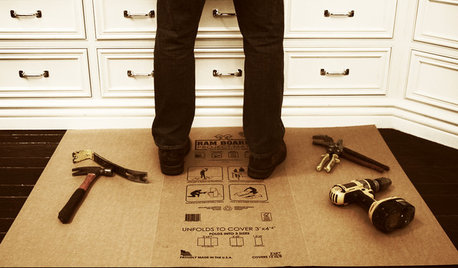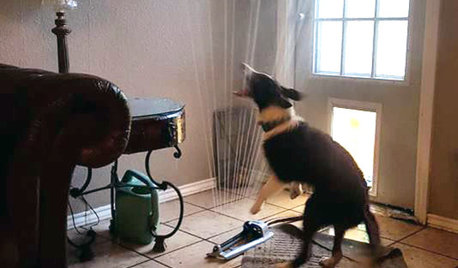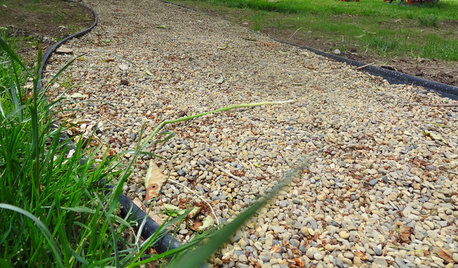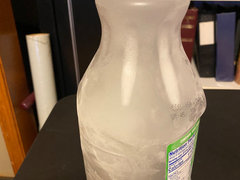DIY sprinkler blow out?
Joe BigBlue
5 years ago
Featured Answer
Sort by:Oldest
Comments (27)
Related Discussions
Sprinkler System - Wiring
Comments (1)Hi rc, You have got me confused as well. I would get a voltmeter and make sure what wires are hot and what are not. The red wire connected directly to the white wire in the bundle raises a question for me. Red is usually a hot wire and connected to the white common wire in the bundle may have made all the common wires in the bundle hot, or maybe not. The volt meter will tell the story. I would draw a wiring diagram of what you are trying to do and find some help(google) with what you need to do. JMHO. GL Aloha...See MoreBlowing out sprinkler system
Comments (7)The size (ie gals) does not matter. You need enough air flow or CFM to do the job. The big units have over 100 cfm. Some recommend at least 40 cfm. I rented a 15-20 cfm unit since no body rented a 40, and it did the job just fine. My system is 3/4 poly, with no sprinkler heads - it is just a burried system to provide water at remote locations. I collected the water at the outlet of the system, and all water was out in a few minutes. Most home compressures only have about 5 cfm. It might be of interest to know how to connect the unit. I took off the standard compressure connector (screws to the hose) and the remaining piece fit just perfectly in 1/2 inch hose, which I connect to the system....See Morecan't get old sprinkler head out, can I place an extension on it?
Comments (1)If you remove it you can put a riser on the pipe to get it up higher. you should be able to spin it off with a pair of channel locks or a riser extractor. Here is a link that might be useful: do_it_your_self_site...See Moresprinkler head leaking after blow out???
Comments (5)I believe lehua13 is steering you in the right direction. To really determine if there is a leak from the head and not something else (like ground water drainage), dig down as much as needed and remove the sprinkler head (this shouldn't require much digging as the TOP should most likely be able to unscrew allowing the "guts" of the head to be serviced without digging the whole head up out of the ground and disconnecting it from the pipes). If there IS water comming up into the sprinkler head with both of ya'll systems shut down and no water meaters turning, then about the only thing that makes any sense to me is that he has a broken pipe that is somehow allowing water back-into the system after a blowout. After all, it is possible that a broken line has created a little cave underground that fills with water when he runs the irrigation system. When he then blows out the system, that little cave can still be filled with water. Then, with the system shut down, water from the little storage cave could be flowing back into the broken pipe and out the leaking head....See MoreSaypoint zone 6 CT
5 years agoUser
5 years agoSaypoint zone 6 CT
5 years agoJoe BigBlue
5 years agoWil Haines
3 years agodanielj_2009
3 years agoUser
3 years agoUser
3 years agodchall_san_antonio
3 years agoUser
3 years agoUser
3 years agoWil Haines
3 years agodanielj_2009
3 years agodchall_san_antonio
3 years agoUser
3 years agoWil Haines
3 years agoWil Haines
3 years agoWil Haines
3 years agoUser
3 years agoA Black
8 months ago
Related Stories

BATHROOM DESIGNOut With the Old Tile: 8 Steps to Prep for Demolition
This isn't a light DIY project: You'll need heavy-duty tools and plenty of protection for your home and yourself
Full Story
MOST POPULARSpring Patio Spiff-Ups: 12 Doable DIY Projects for Your Outdoor Space
Prettify your porch or patio with these time-sensitive decorating boosts you can do yourself
Full Story
LOFTSDIY Spirit Reinvents an Industrial Home
Armed with a detailed plan from a designer, this homeowner rolled up his sleeves and transformed his Edmonton loft space
Full Story
DECORATING GUIDESUncover Your Junk's Hidden Decorating Potential — Scads of DIY Ideas
Release your typewriter's inner planter or a drum set's coffee table. These creative ideas will have you seeing the possibilities
Full Story
MY HOUZZMy Houzz: Farmhouse-Inspired DIY Style in Kentucky
A blogger and her husband personalize their builder-basic home with a budget-friendly kitchen renovation and more
Full Story
DECORATING GUIDES8 Reasons to Jump Off the DIY Bandwagon
You heard right. Stop beating yourself up for not making stuff yourself, and start seeing the bright side of buying from others
Full Story
PETSHappy Puppy Drags Sprinkler Through Doggy Door, and Chaos Ensues
A border collie pup becomes internet famous after he soaks his owner’s living room with his favorite toy
Full Story
DIY PROJECTSLace Goes Modern in an Upholsterer's DIY Pendant Lights
Bring romance to a room with delicate pendant lights you can make yourself
Full Story
GARDENING AND LANDSCAPINGDIY Pathway Puts Landscapes on the Right Track
Create a road more traveled in your backyard, and save your lawn from foot traffic, with this easy, affordable gravel path
Full Story
DECORATING GUIDESBudget Decorator: How to Save When You Don’t DIY
You don’t have to be crafty to decorate your home inexpensively. Here are other ways to stretch your design dollars
Full Story





Wil Haines